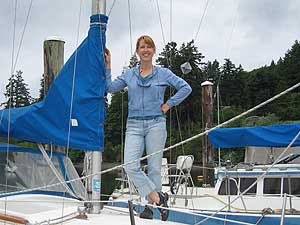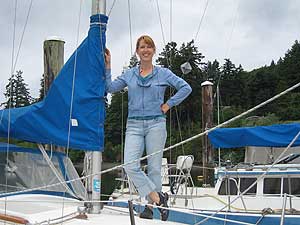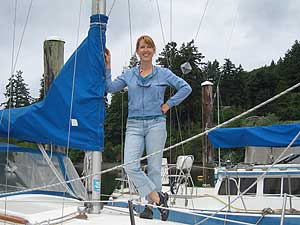Basic Sailing and Seamanship: The Boater's Pocket Reference
Print isn't dead; check out this essential must-have onboard publication.
June 24, 2008
As a kid, I always envied Captain Kirk of Star Trek. Not only could he boldly go where no man had gone before and I could only ride my bike as far as Wildcat Lake, he also had a Computer. Want to know the composition of an amorphous, interstellar blob? Just ask the Computer. Want to know the purpose of that bulging, pulsing vein on a Klingon's forehead? Just ask the Computer. Want to know the mating rituals of human spores? the Computer knows. All Captain Kirk had to do was ask.
The internet comes close with its wealth of information, but I don't have the internet on my boat. Although, my boat is a pitiful thing alongside the USS Enterprise, I still can generate a headache's worth of questions. Enter The Boater's Pocket Reference: Your Comprehensive Resource for Boats and Boating by Thomas McEwen. Published by Anchor Cove Publishing Inc. , it is 760 pages of everything boat, including keel boats, in a 5-1/2x 3-1/2"format. It is highly readable despite its size, fully indexed and has a complete glossary.
From boat design, boating rules and regulations, navigation rules (ColRegs), boat operating and seamanship, piloting and navigation (including celestial), ropes, lines and knots (marlinespike seamanship), weather, mechanical, electrical, communication, boat trailering, general reference tables, conversion tables, boating organizations and bibliography, nothing is missing in this indispensable little book.
While you might be deterred from looking something up or even bringing aboard the large and ballast-worthy 7-pound boater's bible Chapman Piloting & Seamanship, you won't hesitate with The Boater's Pocket Reference. Like a good soldier, you will find this book ever at the ready in a pocket, sea bag, or a modest ship's library aboard.
What's the resistance per unit of length of 18-gauge wire? It's in there. The pros and cons of bonding versus nonbonding of through-hulls? Page 568. Fuel/oil mixture tables for 2-cycle engines. Look no further.
If time is elastic, then space is too. This book is proof of it. Get one. Over and out.













